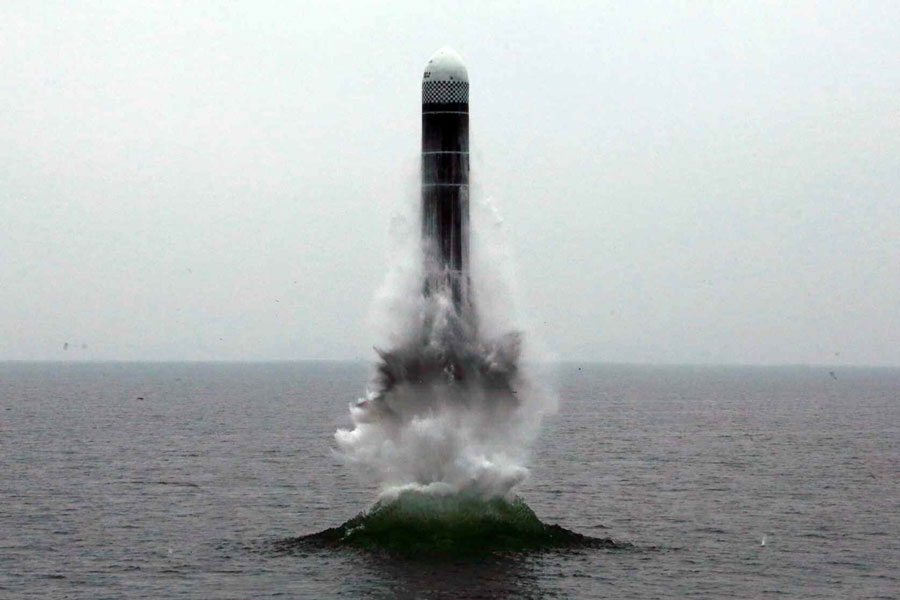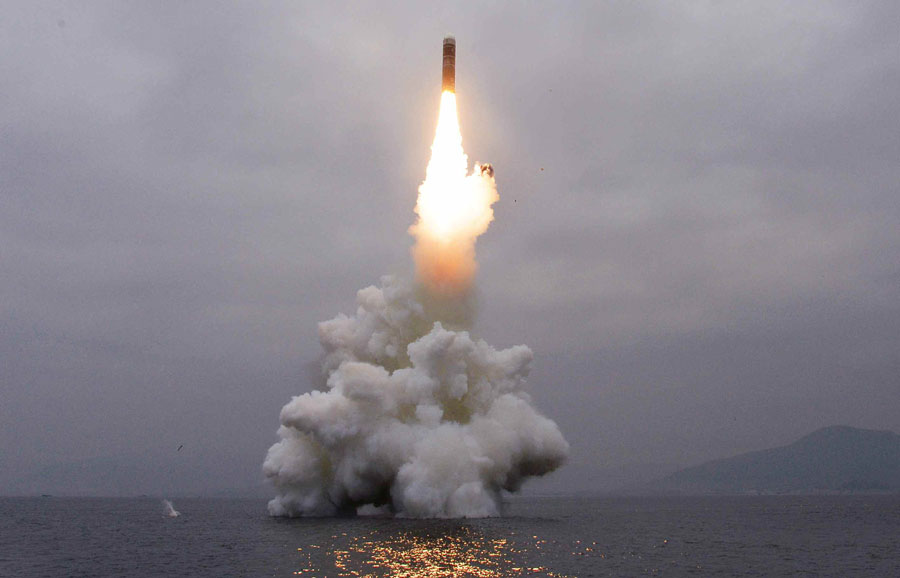
THE PENTAGON – The Democratic People’s Republic of Korea test-fired what it claims is a new type of submarine-launched ballistic missile, though Pentagon officials and other experts say there’s a long way to go before North Korea has a credible sea-based nuclear deterrent.
“The Academy of Defense Science of the Democratic People’s Republic of Korea succeeded in test-firing the new-type SLBM Pukguksong-3 in the waters off Wonsan Bay of the East Sea of Korea on Wednesday morning,” according to an account posted by the North Korean-based state-run Korea Central News Agency (KCNA). “The new-type ballistic missile was fired in vertical mode.”
The new missile type wasn’t was fired from a submarine, according to the Department of Defense. Pentagon officials are still analyzing the launch data available to determine the type of missile fired, but for now do not think it was an intercontinental missile.
“We assessed it was a short-medium range ballistic missile,” Air Force Col. Patrick Ryder, a Joint Staff spokesman, said during a media briefing Thursday. “We have no indication that it was launched from a submarine, but rather a sea-based platform.”
The North Koreans have developed submersible barges for testing. Pyongyang proclaimed the test a success that will advance the nation’s defenses against what it considers a hostile neighborhood.

“The successful new-type SLBM test-firing comes to be of great significance as it ushered in a new phase in containing the outside forces’ threat to the DPRK and further bolstering its military muscle for self-defense,” according to the KCNA post.
According to an analysis posted by Michael Ellman, a North Korean expert with 38 North, an organization specializing in North Korean analysis, suggested the missile type could pose a danger to Japan.
“The two-stage, solid-fuel missile flew on a steep, upward trajectory, reaching a peak altitude of 950 km, and landing about 450 km from the launch point,” Ellman wrote Thursday. “If the Pukguksong-3 had used a standard trajectory, it would have overflown Japan and covered 1,900 to 2,000 km, making it the longest-range solid-fuel missile North Korea has tested to date.”
Vann Van Diepen, also with 38 North, wrote in September the North Korean submarine force is currently unlikely to pose much of a threat to the U.S., even with the new missile development underway. The primary reason is the vast distance the North Korean diesel subs, based on a 1950s-era Soviet-made Romeo-class diesel-electric submarines, would have to cover without being detected.
“The US has over 65 years of experience in detecting, tracking and combating Soviet-style diesel-electric subs,” Van Diepen wrote.
However, if the North Korean subs remained near Japan, tracking them will be harder, Van Diepen added.
Secretary of Defense Mark Esper, during a call Thursday morning with his Japanese counterpart, Japanese Defense Minister Taro Kono, agreed, “This was unnecessarily provocative and not helpful to get the North Koreans back on a diplomatic path,” said chief Pentagon spokesman Jonathan Hoffman said during Thursday’s media briefing.





